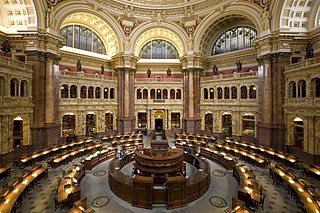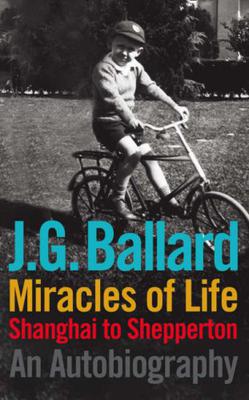
An autobiography, sometimes informally called an autobio, is a self-written biography of one's own life.
A false document is a technique by which an author aims to increase verisimilitude in a work of fiction by inventing and inserting or mentioning documents that appear to be factual. The goal of a false document is to convince an audience that what is being presented is factual.

Roman à clef, French for novel with a key, is a novel about real-life events that is overlaid with a façade of fiction. The fictitious names in the novel represent real people, and the "key" is the relationship between the non-fiction and the fiction. This metaphorical key may be produced separately—typically as an explicit guide to the text by the author—or implied, through the use of epigraphs or other literary techniques.

American literature is literature written or produced in the United States of America and in the colonies that preceded it. The American literary tradition is part of the broader tradition of English-language literature, but it also includes literature produced in the United States in languages other than English.

A ghostwriter is a person hired to write literary or journalistic works, speeches, or other texts that are putatively credited to another person as the author. Celebrities, executives, participants in timely news stories, and political leaders often hire ghostwriters to draft or edit autobiographies, memoirs, magazine articles, or other written material.

Creative nonfiction is a genre of writing that uses literary styles and techniques to create factually accurate narratives. Creative nonfiction contrasts with other nonfiction, such as academic or technical writing or journalism, which are also rooted in accurate fact though not written to entertain based on prose style. Many writers view creative nonfiction as overlapping with the essay.
An autobiographical comic is an autobiography in the form of comic books or comic strips. The form first became popular in the underground comix movement and has since become more widespread. It is currently most popular in Canadian, American and French comics; all artists listed below are from the U.S. unless otherwise specified.

Oranges Are Not the Only Fruit is a novel by Jeanette Winterson published in 1985 by Pandora Press. It is a coming-of-age story about a lesbian who grows up in an English Pentecostal community. Key themes of the book include transition from youth to adulthood, complex family relationships, same-sex relationships, organised religion and the concept of faith.
Fiction writing is the composition of non-factual prose texts. Fictional writing often is produced as a story meant to entertain or convey an author's point of view. The result of this may be a short story, novel, novella, screenplay, or drama, which are all types of fictional writing styles. Different types of authors practice fictional writing, including novelists, playwrights, short story writers, radio dramatists and screenwriters.
Inspirational fiction is a sub-category within the broader categories of "inspirational literature" or "inspirational writing." It has become more common for booksellers and libraries to consider inspirational fiction to be a separate genre, classifying and shelving books accordingly. Reasons for this include the increased popularity of inspirational fiction in recent years, and the appeal of inspirational fiction beyond readers of the genre that these books would otherwise be classified in.
The non-fiction novel is a literary genre that, broadly speaking, depicts non-fictional elements, such as real historical figures and actual events, woven together with fictitious conversations and uses the storytelling techniques of fiction. The non-fiction novel is an otherwise loosely defined and flexible genre. The genre is sometimes referred to using the slang term "faction", a portmanteau of the words fact and fiction.
Autofiction is, in literary criticism, a form of fictionalized autobiography.

Miracles of Life is an autobiography written by British writer J. G. Ballard and published in 2008.

Fiction is any creative work, chiefly any narrative work, portraying individuals, events, or places that are imaginary or in ways that are imaginary. Fictional portrayals are thus inconsistent with history, fact, or plausibility. In a traditional narrow sense, "fiction" refers to written narratives in prose – often referring specifically to novels, novellas, and short stories. More broadly, however, fiction encompasses imaginary narratives expressed in any medium, including not just writings but also live theatrical performances, films, television programs, radio dramas, comics, role-playing games, and video games. The publishing industry divides fiction into adult fiction, young adult fiction, new adult fiction, and children's fiction.

A novel is an extended work of narrative fiction usually written in prose and published as a book. The English word to describe such a work derives from the Italian: novella for "new", "news", or "short story ", itself from the Latin: novella, a singular noun use of the neuter plural of novellus, diminutive of novus, meaning "new". According to Margaret Doody, the novel has "a continuous and comprehensive history of about two thousand years", with its origins in the Ancient Greek and Roman novel, Medieval Chivalric romance, and in the tradition of the Italian Renaissance novella. The ancient romance form was revived by Romanticism, in the historical romances of Walter Scott and the Gothic novel. Some novelists, including Nathaniel Hawthorne, Herman Melville, Ann Radcliffe, and John Cowper Powys, preferred the term "romance". M. H. Abrams and Walter Scott have argued that a novel is a fiction narrative that displays a realistic depiction of the state of a society, while the romance encompasses any fictitious narrative that emphasizes marvellous or uncommon incidents. Works of fiction that include marvellous or uncommon incidents are also novels, including Mary Shelley's Frankenstein, J. R. R. Tolkien's The Lord of the Rings, and Harper Lee's To Kill a Mockingbird. Such "romances" should not be confused with the genre fiction romance novel, which focuses on romantic love.
Rinascimento privato was the last novel written by the Italian writer Maria Bellonci. It won the Strega Prize in 1986. It is a fictional autobiography of Isabella d'Este, covering the major years of the Italian Renaissance from a private point of view within the court of the Duke of Mantua.
When studying literature, biography and its relationship to literature is often a subject of literary criticism, and is treated in several different forms. Two scholarly approaches use biography or biographical approaches to the past as a tool for interpreting literature: literary biography and biographical criticism. Conversely, two genres of fiction rely heavily on the incorporation of biographical elements into their content: biographical fiction and autobiographical fiction.
Autobiografiction is a literary fiction genre that blends autobiography with fiction; it fictionalizes autobiographical experiences, often by altering them, attributing them to fictional characters or reinventing them into other experiences. The concept of autobiografiction was invented by Stephen Reynolds in 1906, and then researched and described in depth by Max Saunders in 2010.

Inside Story is an autobiographical novel by the English author Martin Amis, published in 2020. It was Amis' final novel to be published before his death in 2023.








